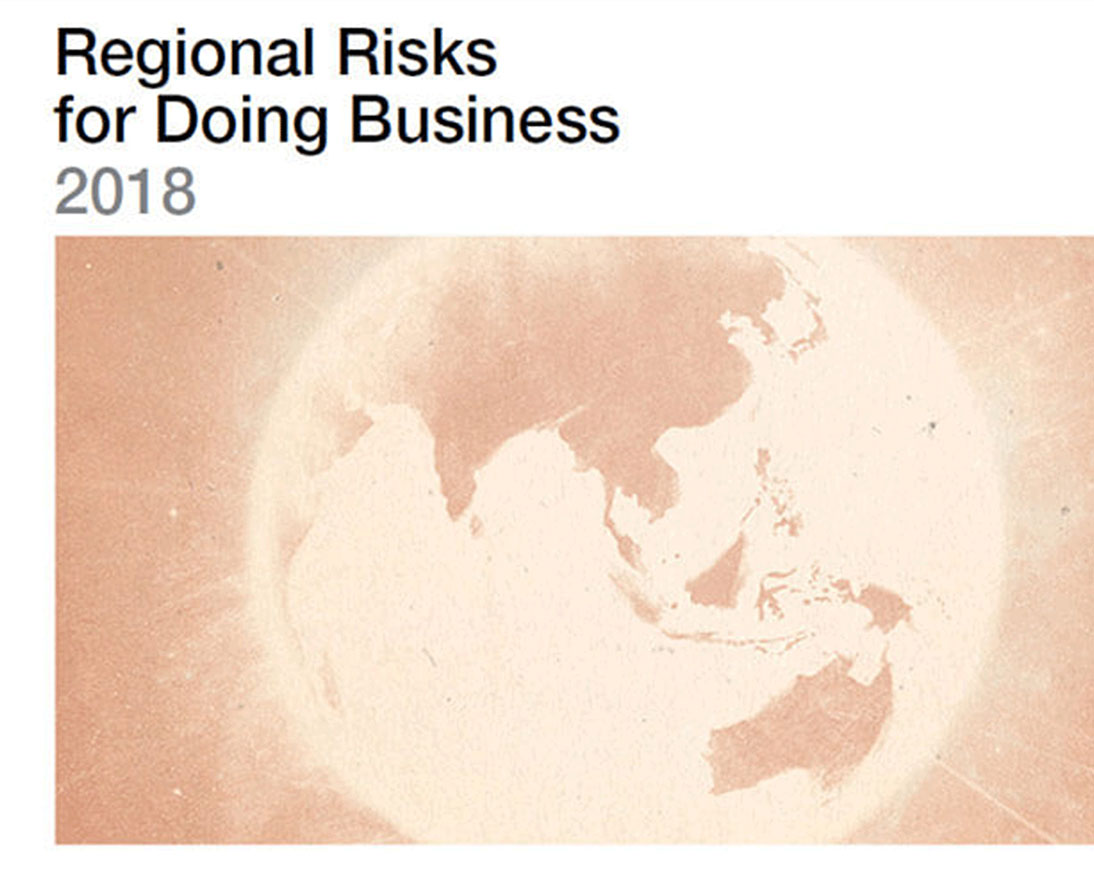Key findings from WEF’s regional risks for doing business 2018 report
Global risksVideoNovember 12, 20184 min read
12’000+ business decision makers’ survey results provide some interesting patterns at global, regional and national levels.
The World Economic Forum surveyed over 12,000 business decision makers, asking ‘what do you see as the top risks for doing business?’
The difference in results from country to country is striking. So much so that, if each country focused purely on dealing with its own risks, globally we would all be pulling in very different directions. This begs the question, ‘will the world be able to come together to solve global risks like the impacts of climate change, migration, etc?’
Perhaps the most surprising result was that environmental concerns did not make it into the global top ten risks. As the survey’s horizon was 10 years, it is possible that business decision makers perceive any environmental impacts of climate change as emerging only beyond that time period. Regardless, business leaders need to act now for mitigation and adaptation strategies to be effective when environmental impacts materialize. Also, to ensure their business survives transition.
The interconnected risk of “water crises” did make it into the top 10 for Middle East and North Africa, Sub-Saharan Africa and South Asia. In these regions, population growth and urbanization are key components of this risk. And the situation is exacerbated by an increased occurrence of drought. This combination means these regions are expected to be among the most water stressed by 2040. Initially, the risk to doing business may remain national and regional issues. However, once possible resulting migration is considered, this is likely to become a global risk to doing business.
At the global level, the top ranked risk in 2018 was “unemployment or underemployment”, with the “failure of national governance” in 2nd position. That these top the list raises real concerns around the current strains on our political and economic systems.
While “failure of national governance” topped the list of risks in South Asia, Latin America and the Caribbean, “unemployment or underemployment” is a top five risk in every region. The exception is North America - where it didn’t even make the top ten. In Europe although it is a top risk for France, it does not make the top five for Germany, the UK or Italy.
“Cyber attacks” is the number one risk for the world’s largest economies of the US, China and Japan, as well as for Germany and the UK. The resulting jump in the global ranking for “cyber attacks” - from 8th last year to 5th this year – is thus not surprising. Reliable digital networks are critical to managing e-commerce, a company’s operations and supply chains. The vulnerability of business operations and critical infrastructure to such attacks was laid bare with the series of attacks – such as Wanna Cry - that took place in 2017. A related and interconnected risk - “data theft and fraud” - was seen as a top ten risk for doing business in North America, Europe and East Asia and the Pacific. In order to maintain confidence, governments and businesses need to strengthen cyber security.
Rounding out the top five risks globally was “energy price shocks” and “fiscal crises”. Unsurprisingly “energy price shocks” topped the list of risks to doing business in Eurasia and Middle East and North Africa.
Finally, with ten years passed from the start of the global financial crisis, the associated risks have slipped in this year's global rankings. “Fiscal crises” dropped from 2nd place last year to 4th this year, and “failure of financial mechanism or institution” dipped from 6th to 7th. Regardless, I would caution businesses not to be economically or financially complacent.








